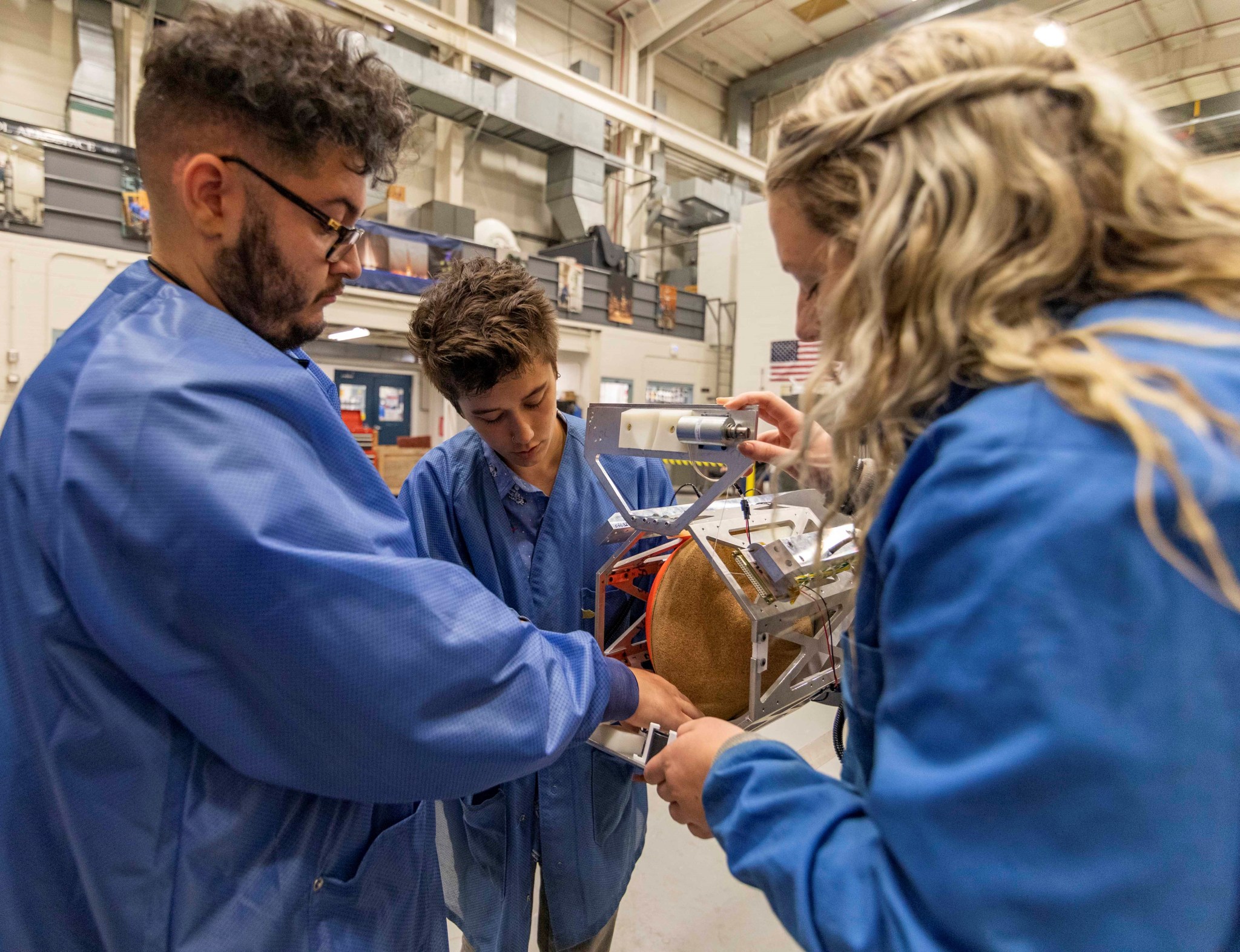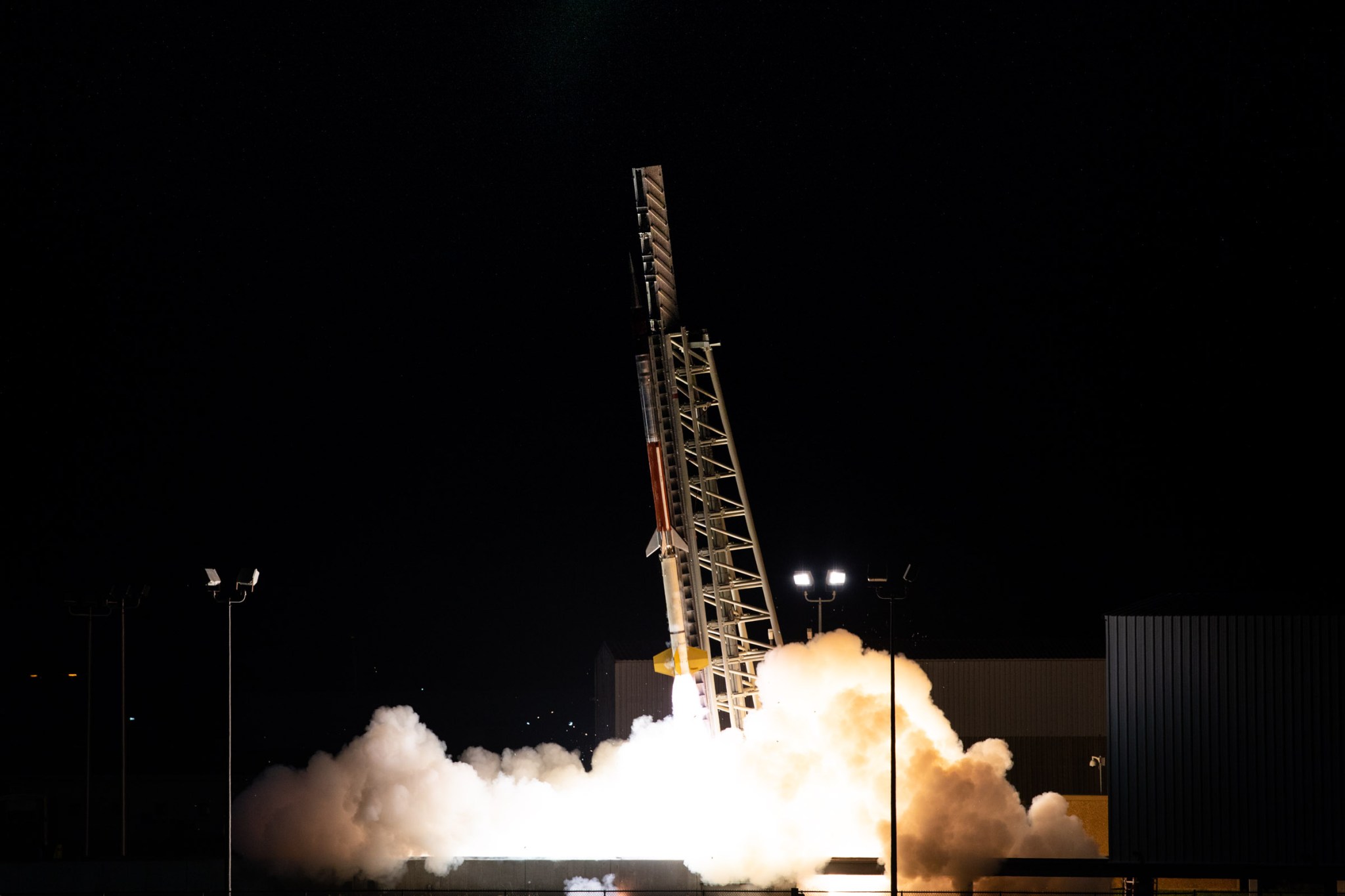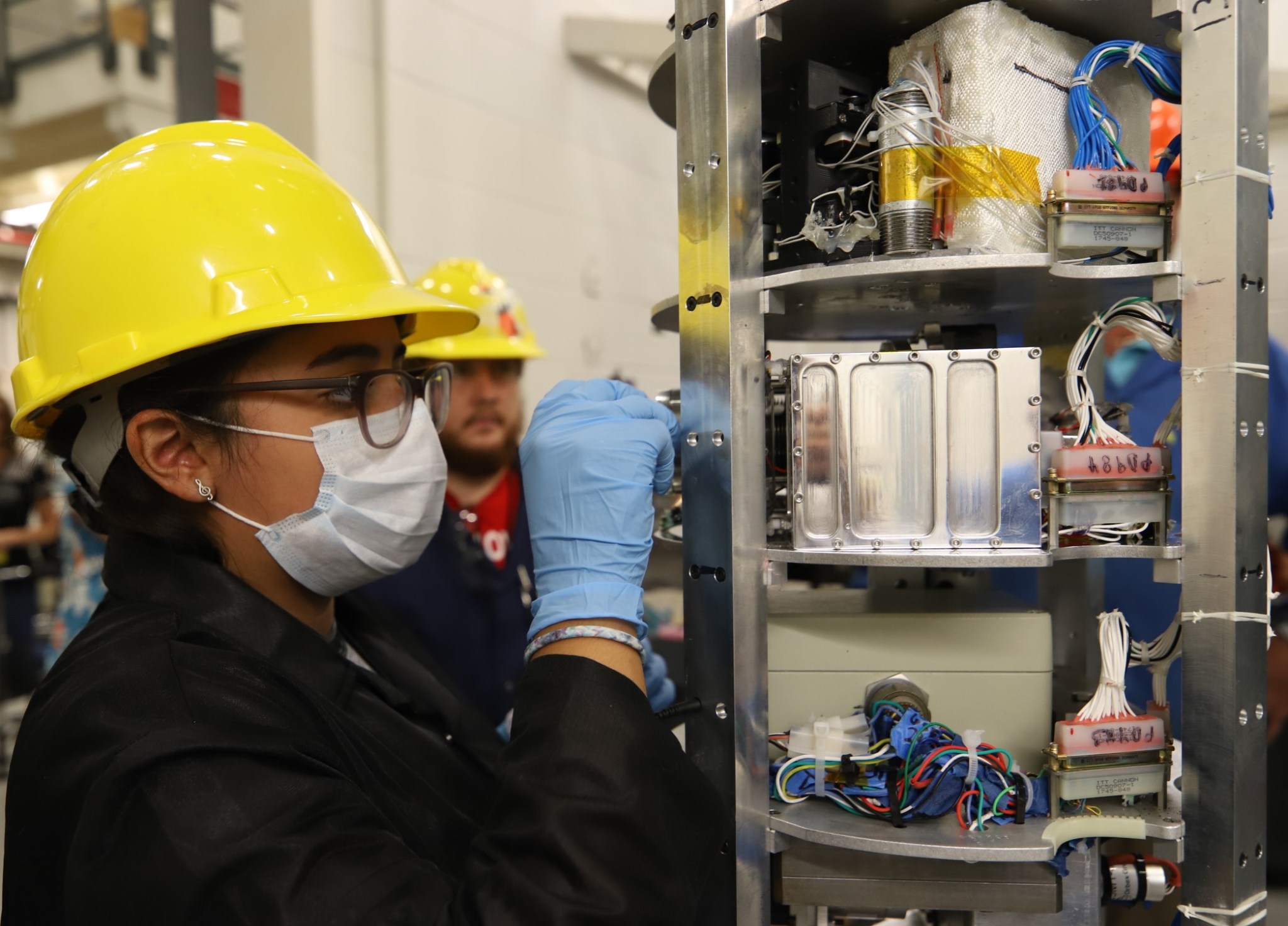The sun begins to rise in the east over the Atlantic Ocean as nearly 100 university and community college students from across the United States wait in anticipation on Wallops Island in Virginia to see their hard work over the past year fly into space.
Finally, the moment arrives as the NASA Terrier-Improved Malemute sounding rocket lifts into the morning sky at 5:44 a.m., Monday, August 12, 2019, from NASA’s Wallops Flight Facility.
The launch is followed by cheers as the undergraduate students see the rocket rise through the sky carrying their experiments to an altitude of 96 miles. The experiments descend from space via parachute into the Atlantic Ocean. It has been recovered and early in the afternoon the students will have their experiments in hand to see how they performed.
“This was the ninth RockSat-X payload launched by NASA. The program, conducted in conjunction with the Colorado Space Grant Consortium, has proven to be excellent training for students. The experience they receive through RockSat-X will prove invaluable as they pursue careers in industry, academia, NASA and other government agencies,” said John Hickman, deputy chief of the NASA sounding rocket program office at Wallops.
“Thanks to the RockSat-X program I’ve had the hands-on opportunity to learn the basics of electrical and mechanical engineering – something I don’t easily have access to in my university. RockSat was a great way to gain this experience, as was meeting new people and socializing. I’ve met like-minded people who became my close friends thanks to the program. It has been a surreal experience to travel to Wallops Flight Facility to see the launch and work with NASA engineers,” said Amanda Ortiz, a junior mechanical engineering major at the University of Puerto Rico.
Seven projects, some including multiple experiments, flew through the RockSat-X program in conjunction with the Colorado Space Grant Consortium. RockSat-X is the most advanced of NASA’s three-phase sounding rocket program for students. The RockOn launches are at the entry level, then progress to the intermedia level RockSat-C missions and then RockSat-X.
Participating institutions in this flight are the Arapahoe Community College, Littleton, Colorado; Community College of Aurora, Colorado; Red Rocks Community College, Lakewood, Colorado; College of the Canyons, Santa Clarita, California; the University of Puerto Rico, San Juan; University of Kentucky, Lexington; University of Maryland, College Park; University of Nebraska, Lincoln; and Hobart and William Smith Colleges, Geneva, New York.
Additional participants from West Virginia include West Virginia University, Morgantown; Blue Ridge Community and Technical College, Martinsburg; West Virginia State University, Institute; West Virginia Wesleyan College, Buckhannon; and NASA’s IV&V Facility in Fairmont.
In addition to enhancing their technical skills, students also experience project management, working in a team environment and mentoring from NASA engineers and technicians.
“Ever since I was a child I knew that my purpose was within the engineering field. I participated in many programs with the hope of gaining the experience to participate with NASA. After attending the Community College of Aurora, I had the opportunity of being part of RockSat-X which was an eye-opener. Diversity, inclusivity, and a wide range of experiences were seen not only in our team but in all the teams. The feeling of “belonging” was something that was felt throughout the project which helped keep me motivated to continue in my career path,” said Ruby Martinez Gomez, an aerospace engineering major at the University of Colorado – Boulder.
Josh Loredo, a senior computer science and mathematics major from the University of Kentucky, added “RockSat-X was a great opportunity for me to get experience building a sounding rocket payload. Getting to learn from and network with engineers here at Wallops is an opportunity I will forever be grateful for.”
Proposals for the next RocKsat-X flight in August 2020 are now being accepted by the Colorado Space Grant Consortium. The due date for proposals is September 16, 2019.
Image Caption: The University of Puerto Rico experiment gets a last-minute adjustment from student Amanda Ortiz. Image Credit: NASA/Berit Bland
Keith Koehler
NASA’s Wallops Flight Facility


































